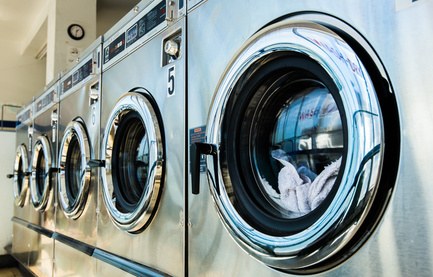
What is it?
Ultrasonic clothes dryers utilize high frequency vibrations instead of heat to remove moisture from fabrics. It takes far less energy to produce these vibrations than to produce the amount of heat used in standard dryers. In fact, they are three to five times more efficient than current dryers.
How does it work?
Special electronic devices, called piezoelectric transducers, operate small amplifiers when electrified that essentially work like music speakers. They produce very high frequency sounds (beyond human or even dog hearing) that “shake” whatever is in contact with them at a high rate of speed. The clothes get dry because they are being shaken at such a high velocity (on the micro scale) that the water droplets are flung out as a cold mist, which is collected in a chamber for draining.
What are the most appropriate applications?
Both residential and commercial settings are appropriate for this technology. Facilities that do more laundry, such as hotels, prisons, dorms, hospitals, and care facilities will get the most benefit. Locations with gas or steam dryers are not viable for this technology.
What are the savings?
Replacing an existing heat-use electric clothes dryer with an ultrasonic one should result in 75% electric energy savings. Put another way, dryer efficiency is expected to go from 3.7 lbs of laundry per kWh consumed to over 10 lbs per kWh.
What are the non-energy benefits?
In addition to energy savings, these dryers have the potential to reduce drying time from 60 to 20 minutes. That can save significant labor costs in commercial laundry rooms. Additionally, water impurities are removed (improving fabric softness), lint issues disappear with no heat and air flow, and fading and shrinking due to high heat are no longer issues.
What is the cost?
Researchers say it will cost between $500 and $1000 when fully commercialized.
What is the status/availability of the technology?
This technology is still in development and is not yet commercially available. Research is expected to be complete in mid-2017.
What kinds of incentives/programs are available?
Right now, this technology would typically be evaluated under Custom Rebate programs. Incentives will vary depending on customer specifics, but in general, it takes a project scope of at least nine multifamily units or one hotel unit to make a viable Custom Rebate project.



